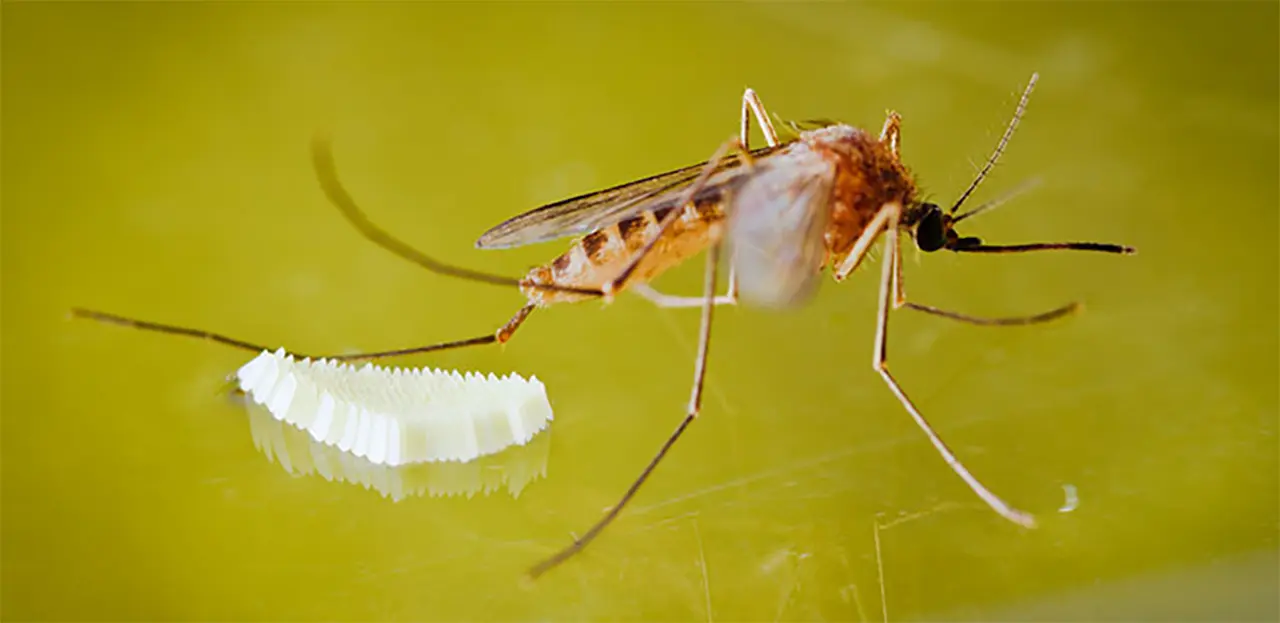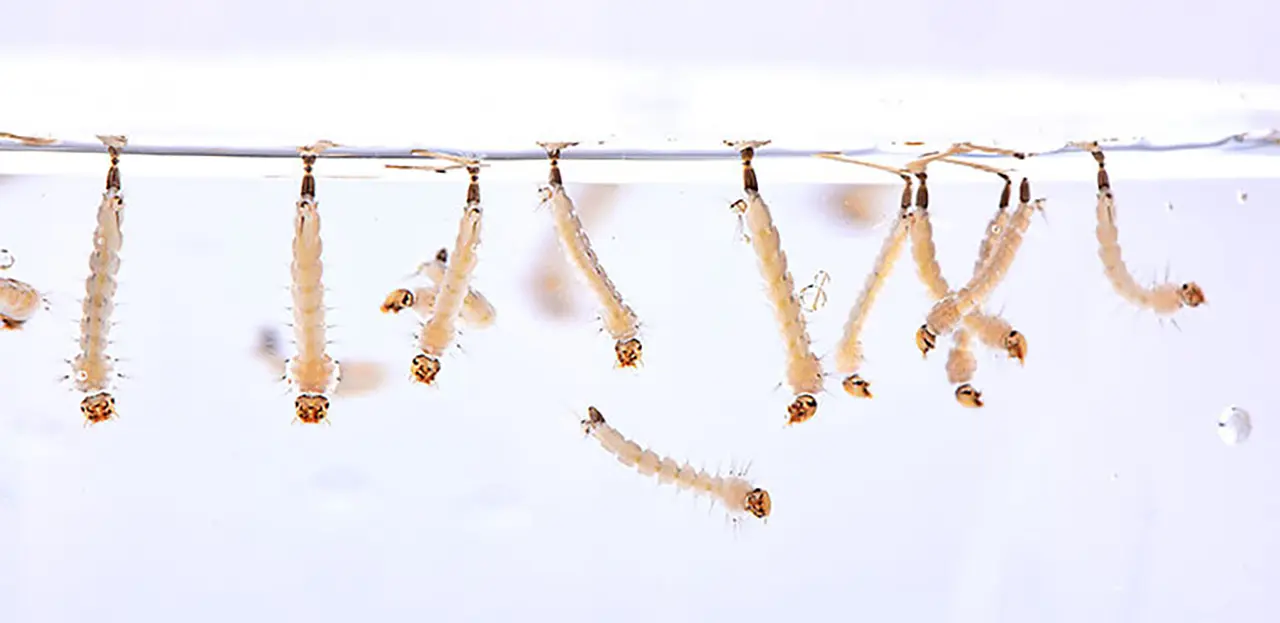Mosquito Life Span & Life Cycle: the Benefits of Mosquitoes
Mosquitoes make their homes on almost every continent and can survive a variety of habitats. Find out how long mosquitoes live and discover the benefits of mosquitoes on multiple ecosystems.
Powered by the SC Johnson Center for Insect Science®
Mosquitoes are infamous for their itchy bites and ability to spread harmful diseases. But it might surprise you to learn that these buzzing bugs actually play an important role in the world’s ecosystems. Find out what happens at each stage of the mosquito life cycle—from egg to mature adult—and get easy tips for how to help keep these bloodsucking pests away from your loved ones.
Mosquito eggs

Mosquitoes often lay up to several hundred eggs at a time. Mosquito eggs can only hatch when exposed to water, so these pesky insects lay their eggs in or near water. Different mosquito species prefer different aqueous habitats to lay their eggs, ranging from flood plains to a small amount of standing water that can collect in containers like a flowerpot or a tire near your home.
Mosquito larvae

The mosquito eggs develop into larvae, commonly known as “wigglers.” Generally, the mosquito larvae hang upside down from the surface of the water they hatched in and breathe through a siphon tube. With limited mobility, wigglers make an easy feast for creatures such as fish, frogs, and salamanders. They also filter organic matter in the water, digesting decaying leaves and other microorganisms and excreting nitrogen and other nutrients that encourage plant growth.
How long do mosquitoes live?
The average mosquito life span varies based on the species, as well as the temperature, humidity, and time of year. Typically, female mosquitoes live for a few weeks, while males only live for about one week.1
Pupa

Mosquito larvae grow and molt four times before changing into pupa. At this stage, they are also known as “tumblers,” because the pupa gains a tail that can propel them through the water. As pupa, they pause their feeding habits and rest while they undergo metamorphosis. In about two days, they emerge from the surface of the water as adult mosquitoes.
Adult mosquitoes

After drying off, the adult mosquito flies away. For nourishment, mosquitoes feed on nectar from fruits, flowers, and other plants. Along with other flying insects, mosquitoes are useful pollinators. So, next time you see a blooming flower, remember it could be the result of that otherwise pesky mosquito.
Watch a video showing the life cycle of Aedes aegypti mosquitoes.
Consequences of reproduction
Female mosquitoes bite because they need an external source of protein to help their eggs develop. Because a female mosquito can lay eggs up to three times in her lifetime, she will feed on multiple animals to develop eggs throughout each cycle. This is how viruses and other harmful microbes in an animal’s blood can be passed along by a mosquito. Diseases that mosquitoes carry can have an enormous effect on people and ecosystems of animals such as monkeys, birds, and even arctic caribou.
Help keep mosquitoes away
Now that you know about the mosquito life cycle, find out how to help get rid of these bloodsucking pests in and around your home.
Find solutions for mosquitoes
We have a family of effective products designed to help you keep mosquitoes away. Because when you’re protecting your loved ones from pesky mosquitoes that may transmit diseases, use America's Most Trusted Insect Control Brand.
Sources
Related Articles

6 Common Mosquito Types
There are more than 3,000mosquitospecies1 buzzing around virtually every corner of the planet. Get the facts about some of the most common mosquito types—and find out how to fight them.

Mosquito Bite Treatment & Relief
There are over 3,000 mosquito species in the world1, but only a small number of these species primarily bite humans. Find out what to do when mosquitoes do bite and how to help control that annoying itch.

How to Help Get Rid of Mosquitoes
Mosquitoes are more than just a nuisance—they can also spread disease and leave you with itchy bites. Find out how to help kill mosquitoes and keep these tiny bloodsuckers away from you and your loved ones.

